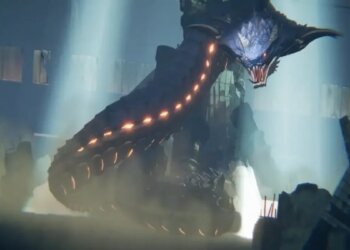Nintendo of America has made it clear that the soon-to-be-released Nintendo Switch 2 won’t feature Hall effect sensors in the analog sticks of its Joy-Cons or Pro Controllers. This was confirmed by Nate Bihldorff, the company’s Senior Vice President of Product Development & Publishing, during a chat with Nintendo Life. While the new console won’t sport these sensors, Bihldorff assures fans that the analog sticks are built with durability as a top priority.
“In designing the Joy-Con 2’s controllers, we prioritized creating them from scratch. Although they aren’t Hall Effect sticks, they perform exceptionally well,” Bihldorff shared. “Whenever we introduce new hardware, our goal is to provide the best possible experience for players. This involves everything from how Joy-Cons enhance gameplay to their long-lasting durability.”
The original Nintendo Switch faced widespread issues with stick drift, where analog sticks would shift positions without player input. This led to numerous class-action lawsuits against Nintendo during the Switch’s lifecycle. Both Nintendo and its American branch’s presidents publicly apologized for these problems, offering free replacement programs for affected analog sticks.
Hall effect sticks represent a modern alternative to the traditional potentiometer-based models. Instead of relying on a wiper that moves against contact pads to generate voltage readings, Hall effect switches utilize magnets for movement detection. Over time, the contact pads in potentiometers can wear down, leading to stick drift issues. While Hall effect technology has gained popularity among third-party controllers and even some PC keyboards, its absence in the Switch 2 has left many puzzled.
Despite this, Bihldorff emphasized that longevity was a major focus for Nintendo in redesigning the controllers for their new console. This sentiment was backed up by insights from a recent developer roundtable with Nintendo’s top product developers for the Switch 2. Kouichi Kawamoto, the product lead for the Switch 2, mentioned that its Pro Controller, while seemingly identical to its predecessor, was completely revamped internally.
Further detailing Nintendo’s goals, hardware lead Tetsuya Sasaki spoke about a long-term initiative at the company aimed at creating the ultimate controller. While he didn’t firmly state that the Switch 2’s controllers have achieved this vision, he noted that the new “smooth-gliding switches” are a considerable achievement for their engineering team.
We’ll only know if Nintendo has truly overcome the early stick drift issues with the Switch 2 as more time passes. Given that Joy-Cons have sometimes displayed drift within just six months, this new console might face scrutiny before 2026 if it hasn’t tackled the problem. Stay tuned for further updates on Nintendo’s latest hardware developments, including insights on its DLSS and ray tracing capabilities, in our ongoing Switch 2 coverage.









































